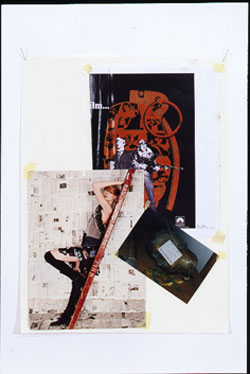Certain Women
Paulina Olowska’s alternative history of the avant-garde is populated by both real and fictional heroines
Paulina Olowska’s alternative history of the avant-garde is populated by both real and fictional heroines

Picture, if you will, the artist. What defines his life? The promise of talent and the fear of failure? What will his role in society be? Bohemian outcast or voice of the revolutionary masses? Now imagine the artist as a woman. Does that change the picture? If so, how?
These questions may sound like the starting-point for an early 20th-century novel. Yet it is precisely this repertoire of fictions of the modern artist that Paulina Olowska draws on in her work. In her installations, paintings and performances she projects scenarios for an alternative history of the avant-garde, in which the heroes are heroines. These women may be artists, architects, poets or models, and they inhabit an environment that combines self-indulgent, bohemian glamour with cool, avant-garde, rationalist sophistication. They are both fictional and real. In fact, Olowska deliberately blurs this distinction. Pointed references to historical figures and styles become cues that set the stage for female protagonists whose future is not determined by the contingencies of the actual past. Instead, her works open up a continuum of historic potentiality. Themes from the 1920s are blended with motifs from the 1960s, for example, or with recent fashion photography. The temporal logic follows rules set by the pleasure principle of the imagination. This speculative dynamic, however, is intrinsically bound up with the desire to address and change the collective sense of history. Olowska dreams in the plural. By the same token her heroines, eccentric as they may be at times, always appear as representatives of a collective vision, of a social project.
At the centre of Olowska’s recent exhibition ‘Sie mußte die Idee eines Hauses als Metapher verwerfen’ (She Had to Discard the Idea of the House as a Metaphor), at the Kunstverein Braunschweig, was a tribute to the figure of the Modernist woman. In the main exhibition space, a former banqueting hall furnished with parquet, stucco and chandeliers, she presented a series of large-format paintings. Among them were Djuna, Virginia, Vanessa, Nina and Charlotte (all 2004), portraits of the writers Djuna Barnes (1892–1982), Virginia Woolf (1881–1941), her sister the painter Vanessa Bell (1879–1961), fellow Bloomsbury bohemian Nina Hamnett (1890–1956) and the architect and designer Charlotte Perriand (1903–1999)...















